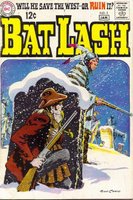
In the Golden Age of Comics, Marvel (or Timely as it was known back then) had three major heroes: The Human Torch, The Sub-Mariner, and Captain America. Having brought back the first as a significantly different character (a teenager, not an adult, and a human, not an android), Stan and Jack decided to resuscitate the Sub-Mariner pretty much as he had been back in the 1940s: an anti-hero who, despite positive qualities always had an ambivalent relationship with the land people.
As the story begins, the remaining members of the Fantastic Four are searching for the Human Torch. This results in some comical moments as Sue drinks a soda while invisible, spooking the customer on the next stool. And Mr Fantastic, spotting some motorcyclists, decides to ask one if he's seen Johnny in his own way:

But Ben comes up with the correct idea of checking one of Johnny's usual hangouts; a garage where he likes to work on hot rods. Only his idea of how to handle the situation when he finds the Torch there isn't quite as brilliant:

But in the middle of the fight, Thing is startled to note that he's changing back into Ben Grimm, and Johnny flies off while he's distracted. But the reversion to a normal human only lasts briefly.
The Torch heads for the Bowery and spends the night at a flophouse. While there, he notices an old comic mag:

Noticing Johnny reading the old comic, one of the bums mentions that there's another guy in the flophouse who's as strong as the Sub-Mariner used to be. After a brief skirmish, the strong man laments that he can't remember who he used to be, so Johnny plays a little flame-barber:

Johnny flies the Sub-Mariner to the ocean and drops him in the salt-water. Sure enough, that restores his memory. But when he returns to fair Atlantis:

He visits Johnny just long enough to let him know that he's declaring war on the humans. Faced with this threat, the Torch has no alternative to summon his former teammates and alert them.

Using an ancient horn, Namor summons a creature from the depths that looks something like a whale with giant arms and legs. It attacks New York City, but the Thing manages to destroy it by strapping a nuclear bomb to his back and doing a Jonah imitation. Meanwhile, Sue tries to steal the horn, and Namor catches her:

Namor seems genuinely surprised she doesn't eagerly accept his offer; but if he really felt his love was so desirable, why would he attempt blackmail right off the bat? But Johnny, using his flame power summons up a whirlwind that deposits the Sub-Mariner back in the water, while the horn that gave him such power is lost forever in the deeps. But Namor vows to return.
Comments: This is the issue where it becomes obvious that something special is going on with the Marvel line. Namor is the first of the villains with some admirable qualities, although by no means the last (as we shall see in the next issue).
As a reminder, Silver Age Gold is doing a similar series on the Thor stories in Journey into Mystery. And here's another blogger doing the same thing with the Doctor Strange stories.


















































